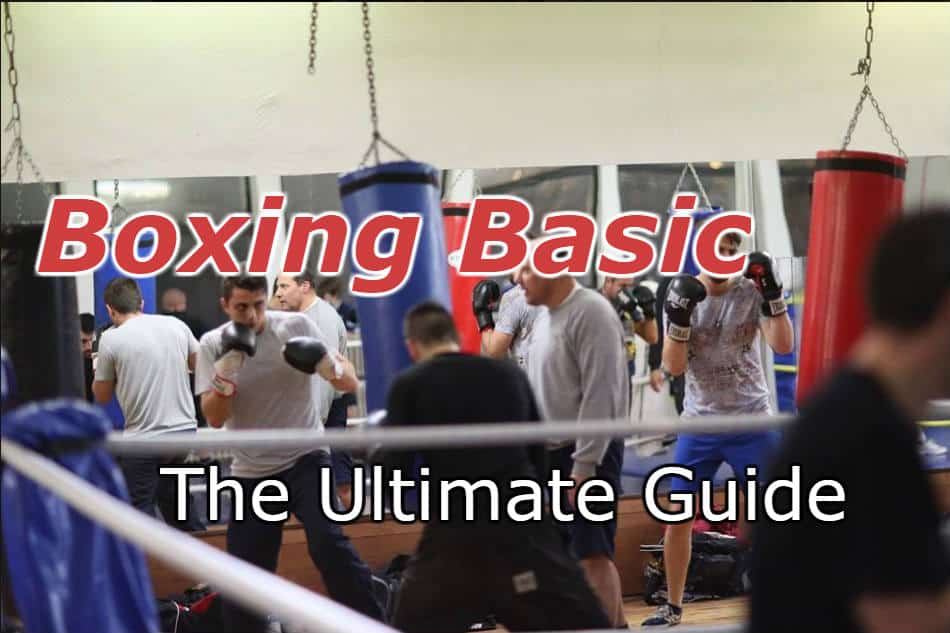
When I started boxing, I had hundreds of questions. I wasn’t sure how to throw punches properly, how to block them or how to move in the ring. I often got outboxed during sparring so I decided to ask for tips almost everyone in the gym, who had more experience than me.
And now, after several years, after I’ve tested many of the tips I’ve been taught, I decided to write this guide to help boxing newbies or people who want to start boxing, learn the basics.
In this article, we are going to talk about how to throw all the different punches in boxing, and which combinations are most effective. Here you’re going to learn also what are the proper boxing stance and guard, the basic boxing footwork, and some tips on choosing boxing gear, choosing a gym and some sparring and training tips.
I tried to cover everything a beginner needs to know about boxing, so don’t worry if you don’t read it in one sitting.
Enjoy!
1) Stance
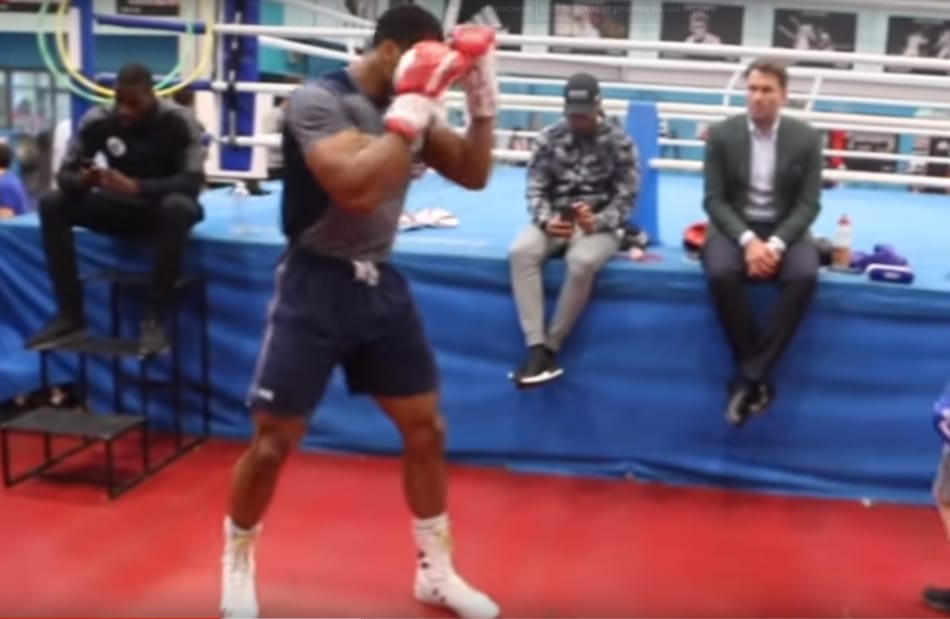
The proper boxing stance is the most import thing you should learn. It will give you good mobility, balance, and also power (because the power in boxing comes from the feet).
How to do it:
The first thing you need to know is that your weak foot should be in front of you and your stronger foot should be at the rear. The front foot toe and the back foot heel should be placed on an imaginary line between your feet (just imagine a straight line right between your feet, or use some sort of string if you want to be more precise).
The angle between the front foot and that line should be no more than 45 degrees and the back foot angle should be between 60-70°. Both feet should be a little wider than shoulder length apart. After you’re ready, bend your knees a little and slightly lift your back foot heel off the ground – that will increase your mobility and your balance.
2) Guard
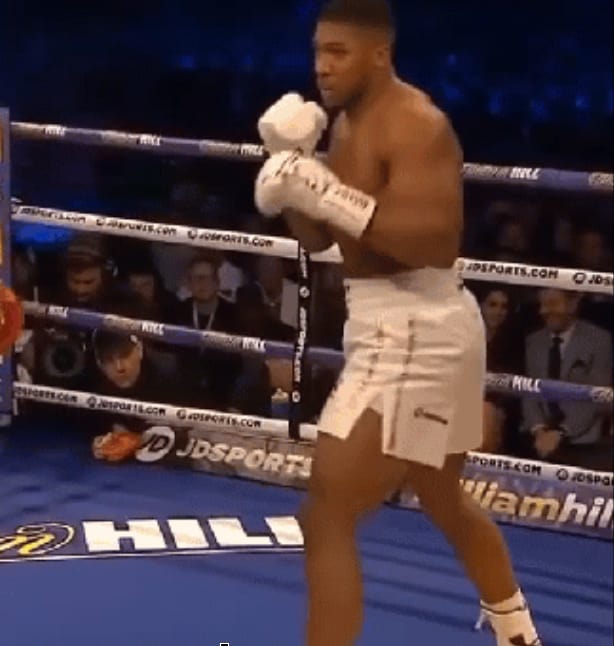
Boxing is about defending and attacking almost at the same time (which is one of the reasons why it’s so hard of a sport). But that’s much easier with a proper guard. You’ll use your boxing guard, to protect your head and your body and to throw punches quick and hard.
Again, just like with the stance, your strong hand should be at the rear and your weak hand in front of you. That way you can build greater momentum and hit harder with your power hand. Meanwhile, you can use your weaker hand to keep your opponent at a distance with quick shots or to set up power hand punches.
We will learn how exactly to do that later in the article when we will discuss the punching combinations. But for now, let’s get back to the guard.
If you’re a righty, and your right hand is at the rear, that’s called an orthodox stance. And if you’re a lefty and your right hand is in front and your left hand at the rear, that’s a southpaw stance.
For orthodox boxers, “lead hand” means their left hand, while for southpaws is the opposite. That’s why boxers say “rear hand” and “lead hand” instead of “right” and “left” hand when they talk about punching.
Here are the 7 steps of the boxing guard:
- Rear hand on your right cheek (or left cheek if you’re a southpaw)
- Lead hand 7-9 inches in front of your face (that’s around an average male hand span)
- Both palms facing each other
- Chin down
- Eyes looking at the opponent
- Elbows tight, protecting the ribs, the liver, and the spleen
- Back – straight
Tips for your guard:
* Don’t make fists, when you aren’t punching. It’s easier to block shots with an open hand.
* Try to not block your vision with your gloves. Keep them just below the level of your eyes.
Related articles:
If you want to dive deeper into the different boxing guards, check out these articles:
- The Best Boxing Stance and Guard for Beginners (+5 Advanced)
- 11 Advantages of Being a Right Handed Southpaw Boxer
- Southpaw Stance Strategy Tips (+21 Combination and Counters)
3) Boxing footwork

The footwork in boxing is kinda different than the regular walking. The most important thing you need to know about the boxing footwork is that you should always step with your lead foot first when moving forward and with your back foot first when moving back (iit’s very similar to the footwork in fencing).
The same thing is true when it comes to lateral movement. When moving to your left, step with your left foot first and with your right foot when moving to your right.
The idea is to never cross your feet when moving (unlike when walking). Because when your feet are crossed you can easily fall off balance, and even the weakest punches can drop you.
Of course, there are advanced footwork movements such as the “cross step” which was used a lot from boxers such as Muhammad Ali and Sugar Ray Robinson, where you’re basically stepping with your right foot first when you moving to your left thus crossing your feet. That can make you fall off balance easily but it allows you to cover more distance quickly.
But for now, just stick to the basics – never cross your feet while boxing (save the fancy footwork for when you gain some experience).
Pivots
In boxing, by pivoting, you can create better angles for attack or escape from a bad situation (for example when you’re on the ropes).
How to do it:
- Lift your back foot slightly off the ground
- Pivot over your lead foot
You can pivot clockwise оr counterclockwise at an angle of 45, 90, or up to 180 degrees.
4) Punches
When punching, ideally, you should aim at your opponent’s chin. That’s the easiest way to score a knockout. However, that won’t be an easy task most of the times. Chances are, your opponent will keep his chin down where it’s protected by the shoulders and the gloves. In such situations here are the other places where you should aim:
Nose
A punch in the nose can make your opponent’s eyes water which will make it harder for him to see your shots. Also if you break his nose that will cause real pain and will hinder his breathing.
Eyes
A swollen eye can block your opponent’s vision making it even easier for you to catch him. So the eyes are another good spot to aim at. Although it’s not very easy to land a precise punch there because of how big the boxing gloves are (in sports with smaller glove such as MMA is much easier), you can still try to punch your opponent in the eyes with some quick jabs.
The place behind the ear
That’s another knockout spot. However, it’s much easier to score a knockout by hitting your opponent in the chin, compared to the place behind the ear, but a hard punch there will definitely daze your opponent. Also most of the time your opponent will cover his chin, while the place behind the ear is often vulnerable.
Liver
The liver is located just below the ribs on the right side of the body. And a clean shot there can be devastating because it causes excruciating pain which makes it really hard to stand on your feet. Many technical knockouts are scored that way – after a hard shot to the liver. So always be ready to throw а powerful left uppercut just below your opponent’s ribs. I promise you that he won’t like it.
How to punch in boxing:
- Before you punch, you should be in your boxing stance.
- Your hands should be up and your elbows tight against your body.
- After you throw a punch, get your hand back quickly in the same position.
- Remember that the other hand should always protect your head. Never extend both your hands at the same time.
- Keep your back straight and don’t lean forward when punching. Otherwise, you can get off balance and get countered easily.
- Keep your hand open before throwing the punch and tighten your fist when it’s halfway to the target. That way, your shots will be much faster.
Eyes:
Keep your eyes open all the time, don’t close them when punching. You can also use your eyes to trick your opponent. For example, you can look down and lower your body a little, pretending you’re going for a body shot, but then throw a punch to the head (the opposite is also effective). That’s used a lot in kickboxing but I noticed that it’s working in boxing too.
Breathing:
Try to exhale sharply when punching and inhale slowly during the rest of the time.
Power:
The power in your punches mainly comes from the technique. The proper technique requires using your whole body when punching, and not only the arms. That way you’re able to generate greater momentum, making your punches much harder. Boxers do that by pivoting their feet and rotating the upper body when punching. I’ll get into in that a minute.
Jab
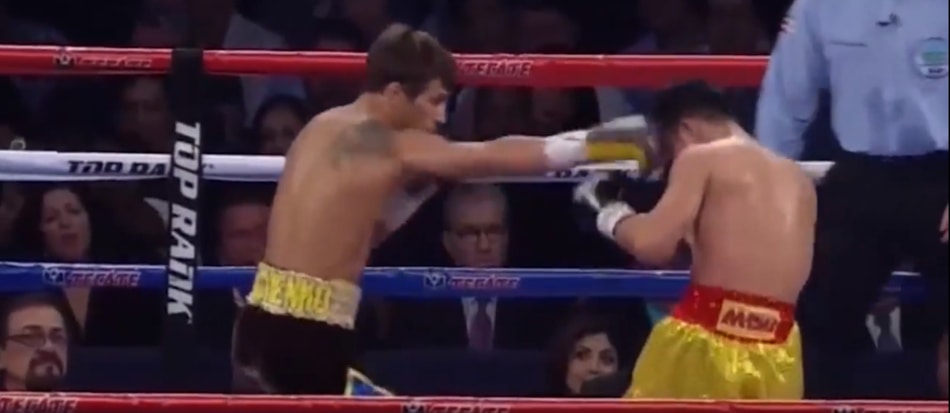
The jab is the fastest punch. It may not be very powerful but it’s really important because it helps you keep your opponent at a distance and it’s the best setup for more powerful punches (such as the right cross, uppercut, or overhand).
How to throw it:
- Extend your arm quickly forward in a straight line
- Turn your fist over just before the punch lands (the palm should face the ground)
- At the moment it hits its target pull it back quickly on the same path
*Unlike the other punches, when throwing a jab, you shouldn’t pivot your foot. The quickness of the jab is much more important than its power.
Tips:
*When throwing a jab, it’s important to not flare your elbow, because that will tell your opponent that you’re going to jab him and he will probably block the punch or even counter it. An easy way to do that is, at first, to jab without turning your fist over – punch with a vertical fist instead of horizontal. That will make it less powerful, but it will help you to punch in a straight line. After you master the jab, you can start turning the fist over.
When to use a jab:
You can use the jab to intercept your opponent when he is trying to close the distance, to just distract his attention of your power hand or just to score some points (if you’re competing in a boxing match).
- Stiff jab – the stiff jab is a powerful punch which is used to really hurt your opponent or even to knock him out. To throw a stiff jab, make a little step with your front foot when jabbing. That will increase its power. Also turn your shoulder as you throw the punch. Also, imagine hitting 3 inches behind your target. That will help you find the right distance to land a hard punch.
- Snappy jab – that’s the classical jab. The snappy jab is the opposite of the stiff jab – it’s is very a quick punch which is hard to defend. When throwing a snappy jab, focus on the speed, not on the power. Throw it quickly, and quickly pull it back.
- Jab to the body – you can throw a jab to your opponent’s stomach or solar plexus. When throwing a jab to the body, it’s important to bend your knees a little and to lower your body. The body jab is a perfect counter for the jab to the head. Just stay at a mid-range, wait for your opponent to throw a jab, then duck under it and counter with a jab to his body.
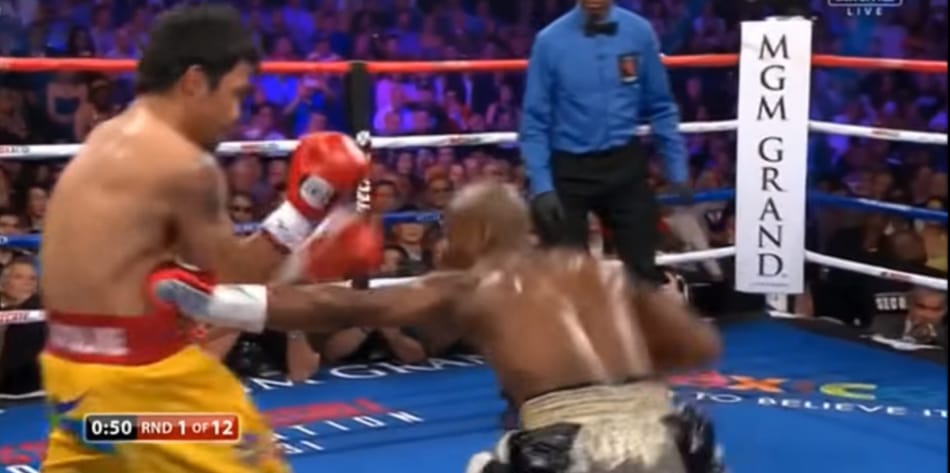
Cross
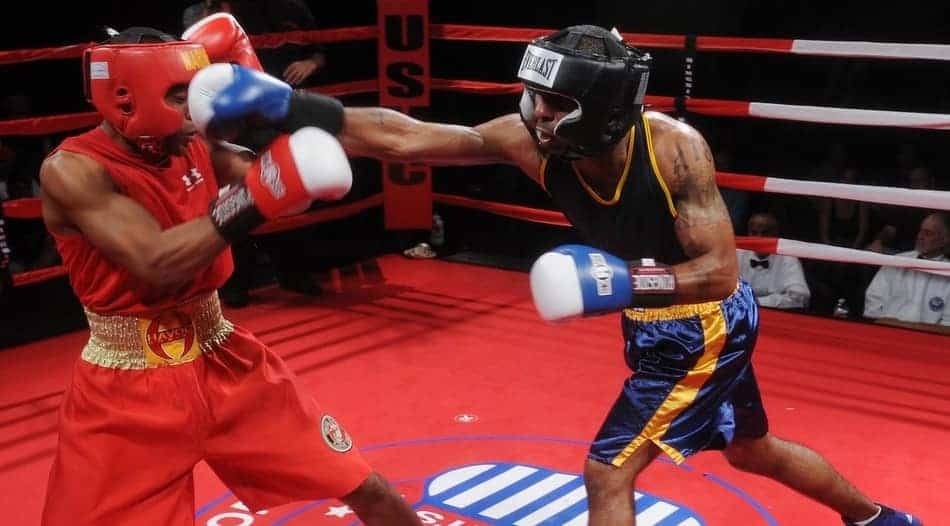
The cross (or the straight punch) can be your most powerful weapon if you do it correctly. It’s a long-range, punch and you can definitely knock someone one with it.
How to throw it:
- Pivot your rear foot (with your heel lifted off the ground) and rotate your hips
- Rotate the upper body and release the punch
- Imagine trying to hit the target with your elbow (that will help to throw the punch in a straight line)
- Exhale sharply and turn your fist over just before it lands (your palm should be facing the ground)
Tips:
- Keep your back straight. Don’t lean forward when throwing the punch.
- Pull your fist back on the same way – don’t drop your hand after you land the punch.
- Protect yourself from counters by keeping your lead hand on your cheek while throwing a cross.
At first, it will be hard for you to find the right distance to land the cross when sparring. You will probably overextend yourself trying to reach your opponent. So I recommend, throwing a quick jab, just to measure the distance and then making a little step forward. That will get you the perfect distance for a hard cross.
How to use the cross:
The cross can be a very powerful punch, but it’s not the quickest one. So I don’t recommend throwing crosses without any setup. Your opponent will see them from a mile away and will block or slip them easily. To prevent that from happening you need to mask the cross with a quick jab to the head (that’s the famous 1-2 combination, which I’ll get into later in this article).
You can catch your opponent off guard with a cross, by blocking his vision with your lead hand. Just stick it in his face, and quickly pull it back as you throw the cross. That technique is often used by longer fighters.
Cross to the body
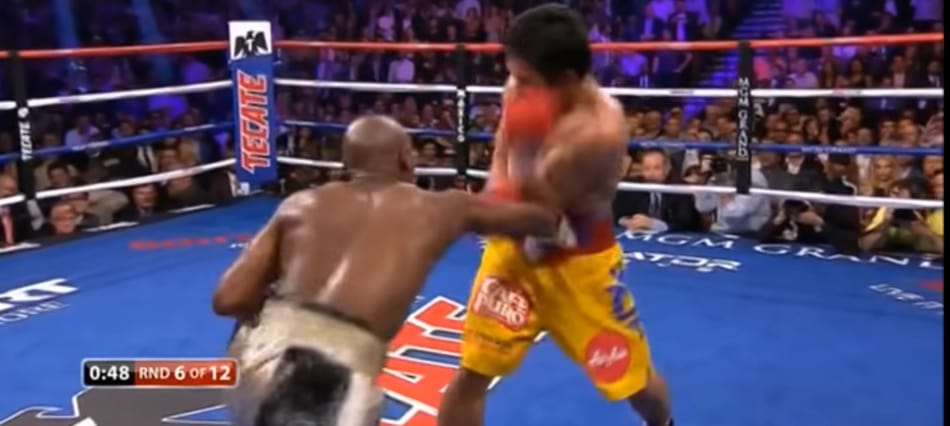
Very similar to the jab to the body but much more powerful. To throw it, bend your knees a little and make a step forward with your lead foot to increase the power of the shot. Aim at your opponent’s, stomach, solar plexus or liver.
Lead hook
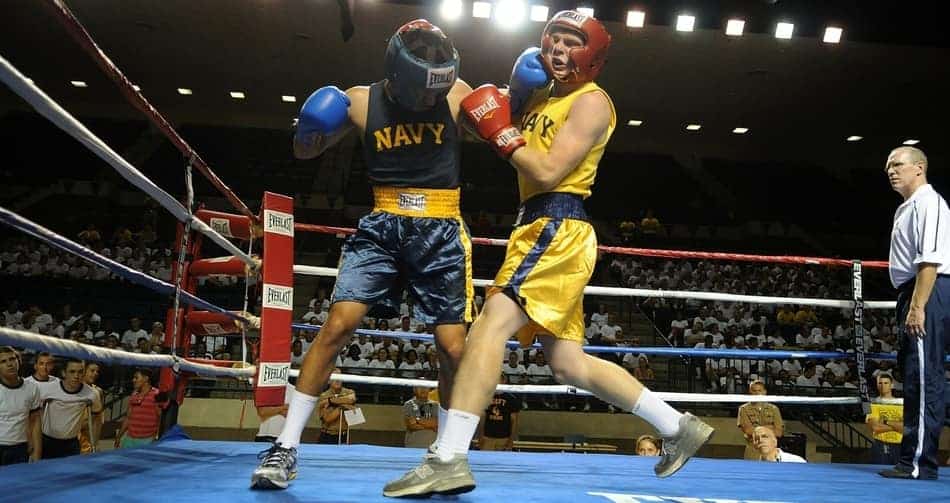
The lead hook (left hook if you’re in an orthodox stance) is a great punch for knockouts and an effective counter. It’s hard to be seen because of its odd angle and you can land it right on the chin of your opponent if you throw it correctly. Here’s how:
- Pivot your lead foot and rotate the hips (lift the left heel off the ground)
- Lead shoulder up (that way you will increase the power of the punch but also protect your chin)
- As the punch lands your elbow should be horizontal
- The palm can be facing you or facing the ground
Tips:
When throwing short-range hooks, your palms should be facing you. And for the land the long-range hooks, it should be facing the ground. That way you will always hit your opponent with your knuckles, no matter of the distance.
The other thing that depends on the range of the shot is the elbow angle. For short-range hook, it can be less than 90°. And even more than 150° for really long hooks.
Lead hook to the body
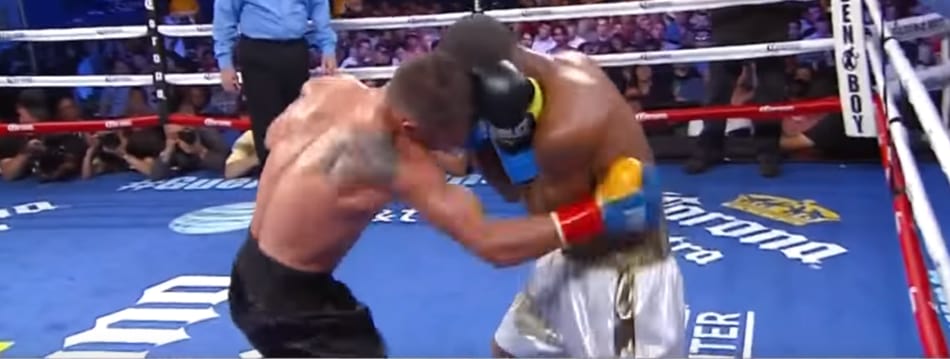
The left hook to the body can be devastating. The technique is very similar to the hook to the head but now you are aiming at the spot below your opponent’s ribs. It’s a really effective punch, especially when fighting against opponents with a high guard. To land it, you can throw one or two punches to the head (without committing too much) just to make your opponent cover himself. Then catch him with a hard left hook to the body.
Rear hook
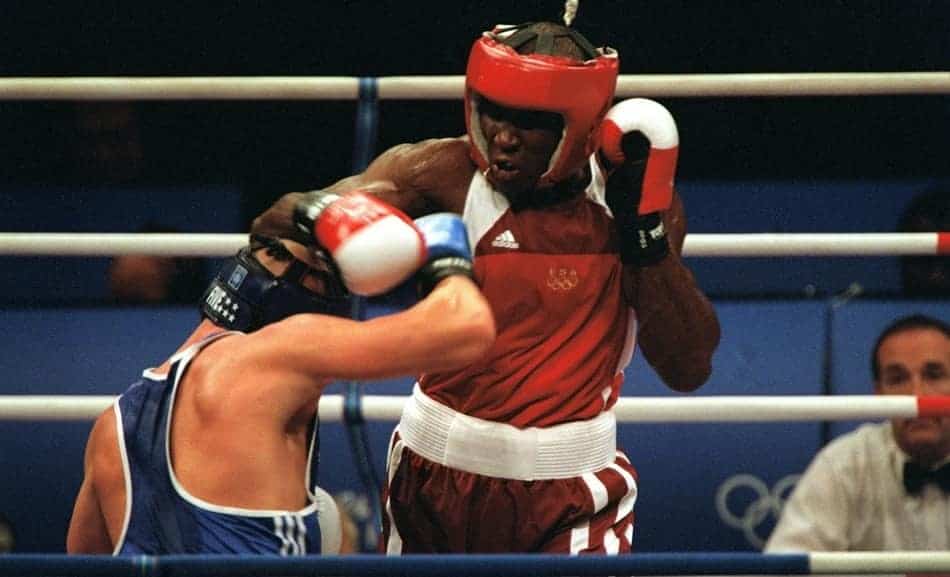
The rear hook (or right hook for orthodox boxers) is a dangerous short to a mid-range weapon. It’s a powerful punch but often is hard to land it because it gets blocked by the left shoulder of your opponent (especially when fighting taller opponents).
Although you can throw it at a long distance, it’s much more effective at short range or even in a clinch. There it’s much harder for your opponent to block the punch quick enough.
How to throw it:
- Pivot your back foot and rotate the hips
- As the punch lands your elbow should be horizontal
- After you land it, quickly pull your fist back on the same way
Tips:
When shadowboxing and practicing that punch, stop your fist at the level of your chin (do the same thing when practicing lead hook).
Rear hook to the body
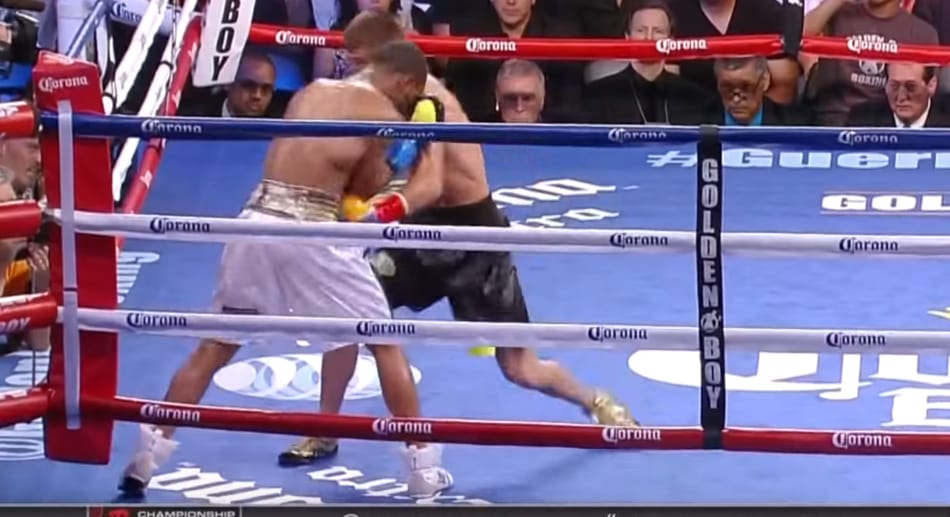
The best way to land the rear hook to the body is when your opponent stays shelled up, defending his head.
Lead uppercut

A sneaky short-range punch, often unexpected because of its weird angle. For some combinations can be used at a long distance. You can use the lead uppercut to launch your opponent’s chin up so you can catch it with your power hand.
How to throw it:
- Pivot your lead foot and rotate the hips (just like when throwing a lead hook)
- Rotate the upper body. For orthodox fighters – move your left shoulder forward and your right shoulder back. And vice versa if you’re a southpaw.
- When throwing the punch, your lead elbow should point down
Tips:
- Move your shoulder slightly up to protect the chin
- Keep your chin down – often people forget to do that when throwing lead uppercut.
Rear uppercut
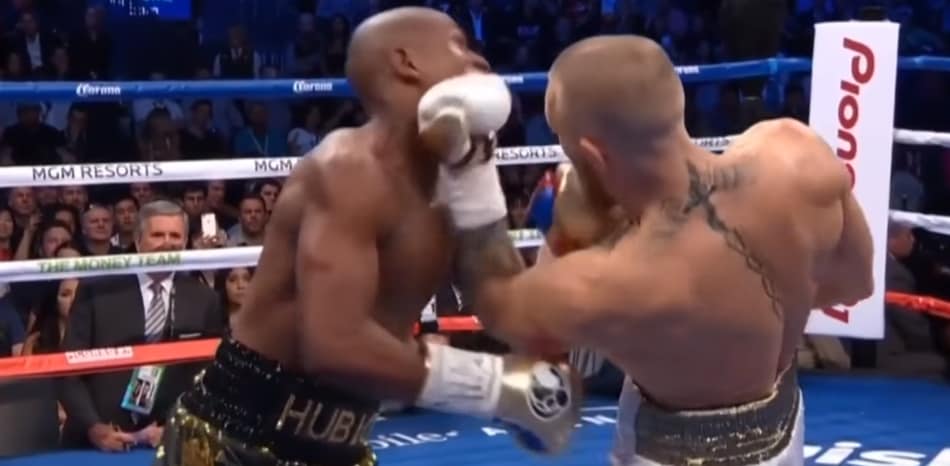
The power hand uppercut (right uppercut if you’re in an orthodox stance) is a very powerful punch, which you can use at a short, mid or long distance. There’s a good chance to really hurt or even knock your opponent out with such shot if you commit to it because it usually lands right on the chin.
How to throw it:
- Pivot your rear foot and rotate your hips (like when throwing right hook)
- Rotate the upper body and release the uppercut
- Move your rear shoulder forward
- Your elbow should be facing the ground
Tip:
The elbow angle depends on the range. For long-range uppercuts, it can be more than 150 degrees. And it can be less than 90 degrees if you want to land it when you’re right in front of your opponent.
Overhand
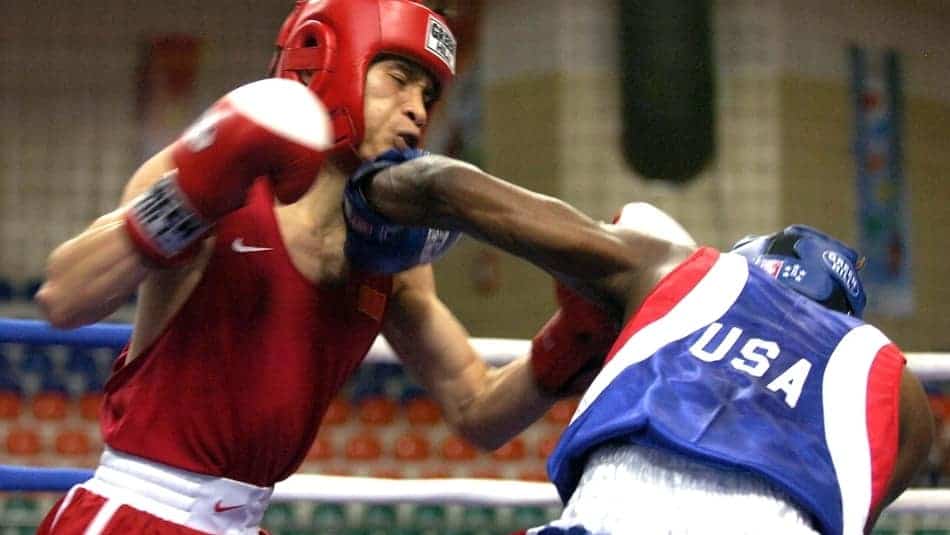
The overhand is a punch which you can use at a long or mid-range. It’s something between a hook and a cross. It’s really powerful and it’s a really effective weapon, especially against taller opponents.
How to throw it:
- Pivot your rear foot and rotate the hips
- Shift your weight on your front foot and lean a little to your left when releasing the punch (or to your right if you’re a southpaw)
- Your fist should be almost vertical as the punch lands
Tips:
This punch is powerful but slow and usually telegraphed. So I recommend throwing it only in combinations or when countering. The easiest combination you can use is a jab followed by an overhand.
This punch is also a great way to counter for straight punches. Because when throwing overhand, you’re naturally moving your head off the center line. So you are slipping the punch and landing the overhand at the same time. I like to counter crosses with an overhand. If you find the timing of the cross and your opponent really commits to it, the overhand counter can be really devastating.
Related articles:
If you want to learn more about throwing punches in boxing, check these articles:
5) Boxing offense
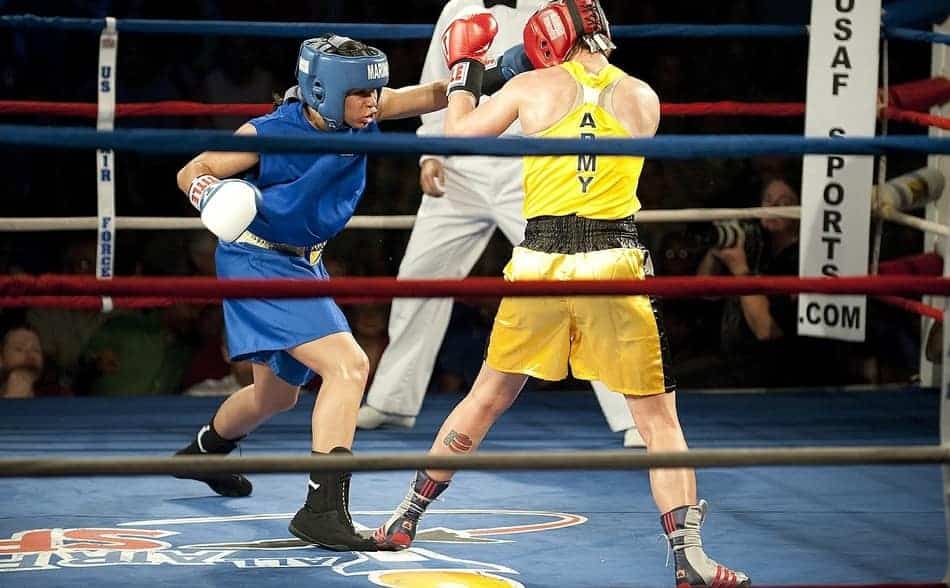
Attacking in boxing isn’t simply throwing punches. Your opponent isn’t a heavy bag, he won’t just stay and take your shots. Chances are he will try to block them, slip them, or just move back, so you won’t be able to catch him easily.
That’s why you need to trick your opponent. If you manage to trick the other boxer, you can beat him, no matter if he is stronger, faster, more athletic or even more skilled. You can do that by using punching combinations (instead of throwing single shots), by using feints, footwork or by countering your opponent.
Basic combinations
Boxing tip – always start your combinations with a jab. That’s the fastest punch, so it’s a great setup for bigger punches.
With a quick jab to the head, you can distract your opponent’s attention or block his vision. That way he won’t be able to see the next punch and to block it. After the jab, you can throw a rear hand cross, hook, uppercut or punch to the body.
You can also throw several punches with the same hand. For instance – jab to the head -> lead hook to the body -> lead hook to the head. That will surprise your opponent, who is expecting left-right-left combinations.
The combinations of different punches are countless. So here I am going to give you the basic and most effective ones. But first, you need to learn the punch numbering system:
- 1 – Jab
- 2 – Cross
- 3 – Lead hook
- 4 – Rear hook
- 5 – Lead uppercut
- 6 – Rear uppercut
- 7 – Lead hook to the body
- 8 – Rear hook to the body
- 9 – Lead uppercut to the body
- 10 – Rear uppercut to the body
Now, the combinations:
1) Jab-Cross (1-2)
The most used and the most effective boxing combination. Some boxers even made a career using mostly this combination.
Throw a quick jab to head of your opponent and as it lands, throw a powerful cross. Don’t make a break, between the punches, because that way you’re giving your opponent time to move back or to see the cross and slip it. Make a step forward after the jab, if you feel that you need to be closer to your opponent to land the cross.
2) Double Jab-Cross (1-1-2)
This is a variation of the previous combo. The double jab helps you to mask the cross better and to better measure the distance. You can use it against opponents who move back when you’re attacking.
Remember that the cross is the hard punch. The jabs are just for distraction. So throw them quickly, without much power but commit to the cross.
If your opponent moves back, make a step with each jab to find the distance for the cross. If he keeps moving back, eventually he will get against the ropes, where you can easily catch him with the cross.
3) Jab->Cross->Lead Hook (1-2-3)
After you land the jab and the cross, you can add a powerful lead hook. Your opponent may think it’s another straight punch so you can catch him with the hook around his guard.
If your opponent is moving back, make a little step forward after you land the cross, so you can find the right distance for the hook.
4) Jab to the body->Cross to the head
That’s a simple but really effective combination.
Make your opponent drop his hands to protect the body with a jab to the body and then land a clean cross to the head.
5) Jab to the head->Rear uppercut to the body
That’s the opposite of the previous combo – attack the head first to make the other boxer get his hands up and then catch him with a hard body shot.
If you’re a southpaw, that’s one of your most effective combinations. Because with your rear hand (your left hand), you can land a liver shot, which can be devastating.
6) Fake a rear hand->Left hook
Pivot your back foot and rotate the body, pretending you’re going to throw a cross, then make a step forward with your lead foot and land a hook to the head.
The idea is to make your opponent cover up, thinking you’re going to throw a straight punch but then to catch him off guard him with the hook.
We will talk more about the feints in a minute.
7) Lead uppercut->Cross
You can use this combination at a long or mid-range.
Bend your knees a little, to make your opponent think you’re going to the body. Then quickly explode up with an uppercut to the head followed by a hard cross.
8) Jab->Rear hook
That’s the short-range variation of the Jab-Cross combo. Use it when your opponent is too close to you and you can’t throw a cross.
9) Jab/lead hook->Right uppercut
Start this combo with a jab at a long distance and with a lead hook, at mid or short-range. The idea is to make your opponent slip the jab or duck under the hook so you can catch him with a hard uppercut right on the chin.
10) Jab->Lead hook to the body->Cross
By throwing two left or two right punches one after another you can confuse your opponent who is expecting the standard left-right-left combinations.
Try this combination – throw a quick jab to the head, followed by a lead hook to the body and hard cross. Chances are you will catch the other boxer off guard.
You don’t need many combinations to win a fight. At first, try to master all the punches. Then you start using mainly the most important combos:
- The jab-cross combo
- Jab-cross-lead hook (to the head or to the body)
- Jab to the body-cross to the head.
That’s just fine for a beginner. If you want you to know more about the basic punching combinations, check out this article:
Knockouts
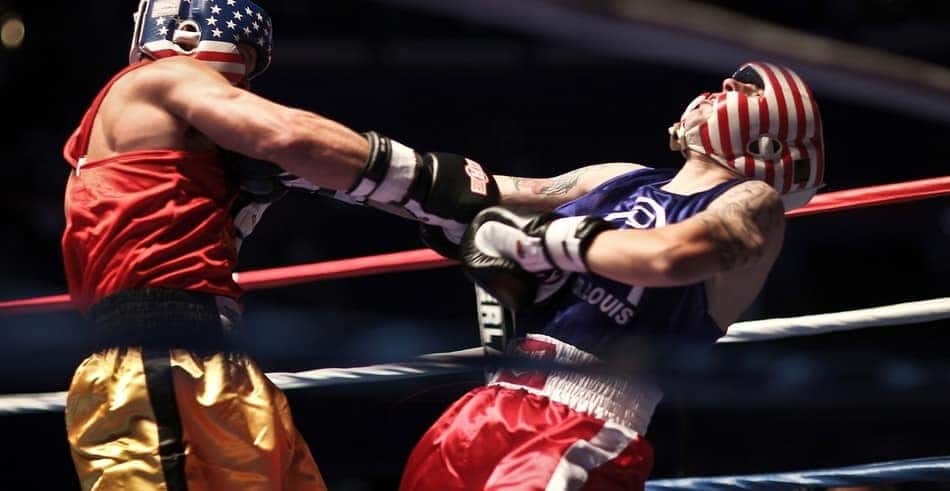
The knockouts in boxing are caused by the concussions after a hit to the head. To land a one-punch knockout you really need some punching power, but there is an easier way to knock some out – by using combinations of punches with a lot of hooks and uppercuts. The idea is to make your opponent’s head move in different directions making the brain slamming hard into the skull (which causes the concussions).
Here are some of the best knockouts combos:
- 1>10>5>4 (Jab-Rear uppercut (body)-Lead uppercut-Rear cross/overhand)
- 1>2>3>6 (Jab-Cross-Lead hook-Rear uppercut)
- 3>6>1>4 (Check lead hook-Rear uppercut-Jab-Rear hook/overhand)
- 1>7>3>4>5 (Jab-Lead hook (body)-Lead hook-Rear hook-Lead uppercut)
- 1>8>3>4 (Jab-Rear hook (body)-Lead hook-Rear hook)
*Note that these combinations are harder to land and require more skill. I recommend using them only when your opponent is hurt, or dazed and you want to finish him. The rest of the time, use the basic combos.
Here’s a great article where I described thoroughly these 5, plus 5 more knockout combinations:
Feints
Most of the beginners don’t use feints enough. They either don’t appreciate them or just don’t know how to use them. But once you learn how to use them effectively, feints can really help you to trick your opponent and catch him. You can use feints to read the reactions of your opponent and to use them against him later in the fight.
Here are 5 easy feints you can use next time you spar:
1) Feint a cross, make a step and throw a left hook – Stop your fist when it’s halfway to the target and pull it back. Then make a step forward and throw the left hook.
2) Move your rear hand quickly up, and throw a jab – Make your opponent look at your rear hand. That way he won’t see the jab.
3) Feint a jab, throw a cross – That’s the opposite of the previous feint. Pull your fist when it’s halfway there and release the cross.
4) Feint a jab to the body, throw a cross to the head – Easy wait to make your opponent drop his hands so you can land a clean shot.
5) Feint a cross, throw a rear hand uppercut – By feinting a cross, you can make your opponent duck his head, trying to slip it, where you can catch him with the uppercut.
Countering head movement
You can use feints to counter the head movement of your opponent. For example, if he likes to slip the jabs to his left, you can feint a jab and then throw a right hook. That way you will make your opponent fall into the punch, which can be devastating.
I recommend using a lot of feints at the beginning of the fight/sparring, so you can read your opponent’s reactions. If you notice he likes to duck under punches, feint a straight punch and throw an uppercut so you can catch him. If he likes to lean back, then feint jabs, make a step forward and then throw a cross.
Counter punches
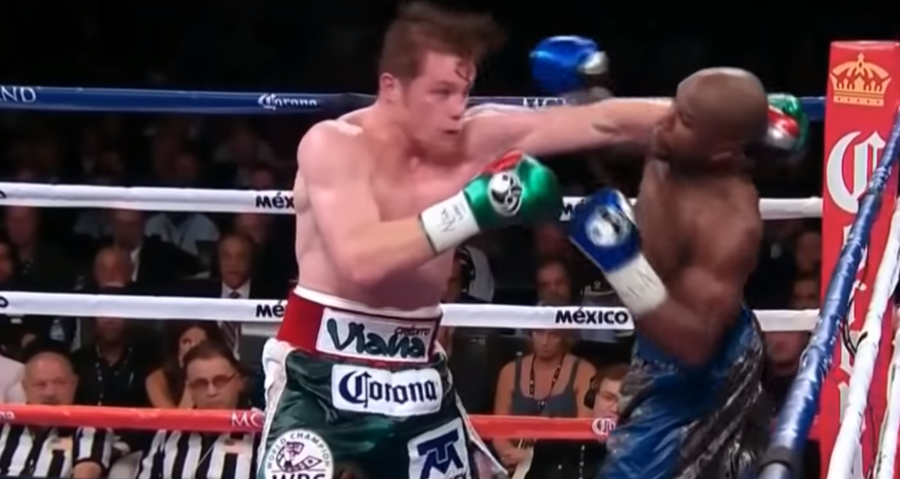
In boxing, you have to defend yourself and to attack at the same time. And the best way to do it is to slip or block your opponent’s punches and to then to counterpunch.
You can block a punch with your glove, forearm or even with your elbow (if it’s a body shot). To slip a punch you need to move your head off the center line, making your opponent hit the air. Think of slipping as moving your shoulder to the opposite knee. If you want to slip to your right, imagine trying to move your left shoulder to your right knee. That will help you to slip correctly. Stop after your head moves a few inches (no more than 8 in – the size of the glove) – just enough to get of the way of the punch.
Here are some easy counterpunches which you can do after slipping:
*The examples below are for orthodox boxers fighting with other orthodox boxers. If you’re a southpaw just do the opposite. For instance, where I say slip to your right, you should slip to your left.
1) Counter the jab with a jab to the body – That’s a basic counter of the jab. All you need to do is time it, to duck under it and to throw a jab to the body of your opponent.
2) Counter the jab with an overhand – Wait for your opponent to throw a jab, slip it to your left and throw an overhand right at the same time.
3) Counter the cross with an overhand – Similarly to when countering the jab with an overhand, you need to slip to your left. But this time move your head a little bit more, to make sure that you slip the shot.
4) Counter the cross with a cross to the body – Duck under the cross and throw a cross to the stomach or the solar plexus of your opponent. Make a step forward with your lead foot to build more momentum.
5) Counter the cross with an uppercut to the body – Slip the cross to your left and throw a quick but hard left uppercut to the liver of your opponent.
6) Defense in boxing
Sometimes the defense in boxing is more important than the offense. A great example of that is Floyd Mayweather Jr. – one of the greatest boxers, who won most of his fights using mainly defensive skills and lightning-fast counters.
There are 3 ways you can defend yourself in boxing – by blocking punches, by using head movement or by using footwork. Let’s dive into them:
Footwork
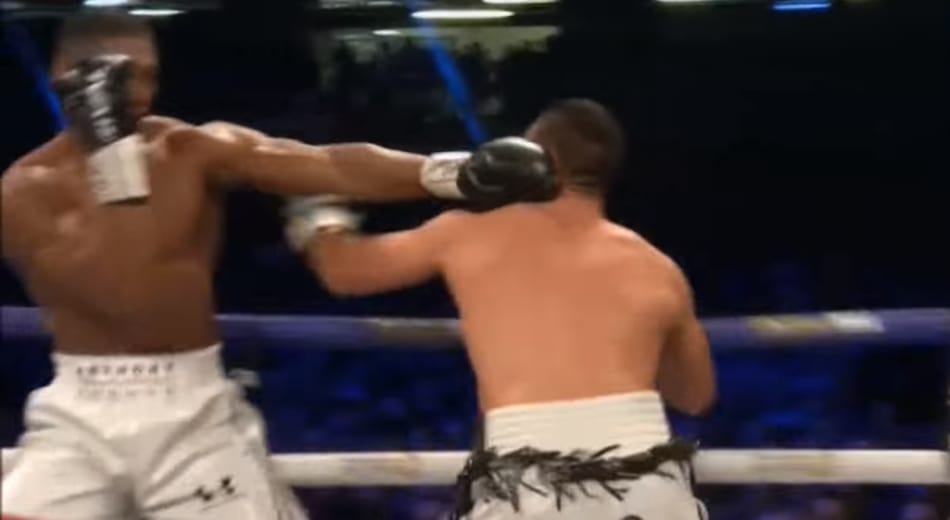
You can defend punches using your footwork, by simply moving back or by pivoting when your opponent attacks you. But don’t move back too much because eventually, you will get against the ropes. In case you find yourself there, you can try pivoting at an angle of 90 degrees to get out of there. Using footwork is a good way to avoid brawling, but sometimes you need to stand your ground.
Head movement
1) Slipping

There are two ways you can slip a punch:
- Slipping to the outside – That’s, for example, when both you and your opponent are in an orthodox stance and you slip his jab to your right or his cross to your left.
- Slipping to the inside – When slipping the jab to your left or the cross to your right.
Slipping to the outside is safer because it’s really hard for your opponent to catch you with a follow-up punch. Inside slipping sometimes is riskier because you can get caught if the other boxer throws a combination. So most of the times try to slip to the outside if it’s possible.
Tips:
- Slip only straight punches (jab and cross)
- Use slipping when your opponent is at least 2 feet away from you
- Move your head just enough to slip the punch – no more than 8 inches
- Don’t forget to keep your hands up while slipping
- Don’t stop moving your head after you slip a shot. Chances are that more will come.
2) Bobbing and weaving
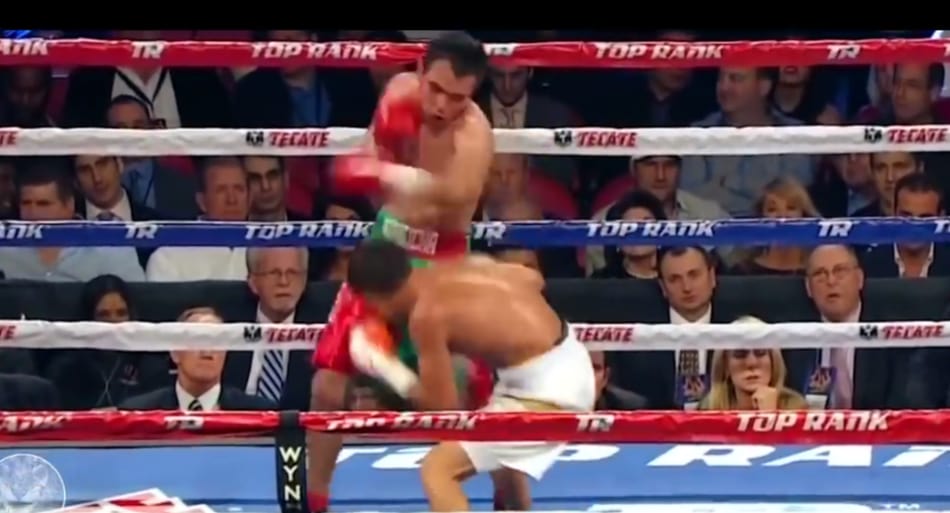
Bobbing and weaving is basically ducking under the punches. You can bob and weave to your left or to your right.
When doing it to your left, bend your knees a little and shift your weight from the right foot to the left. Do the opposite when bobbing and weaving to your right.
Use bobbing and weaving when you’re close to your opponent and want to duck under hooks or overhands. Bob and weave to your left, when the other boxer throws right hooks, and to your right when he throws left hooks.
Use the moment when your opponent misses you and is off balance to land punches. For instance, after you bob and weave, you can go to the body or throw a powerful short-range hook to the head.
You can also use bobbing and weaving from a distance to feint a body shot so you can land a lead hook to the head. That’s a really tricky technique because your opponent thinks you’re going for a body shot because you are lowering your body but then you explode up and catch him with a hook to the head. With similar Joe Frazier dropped Ali in their first fight.
Blocking
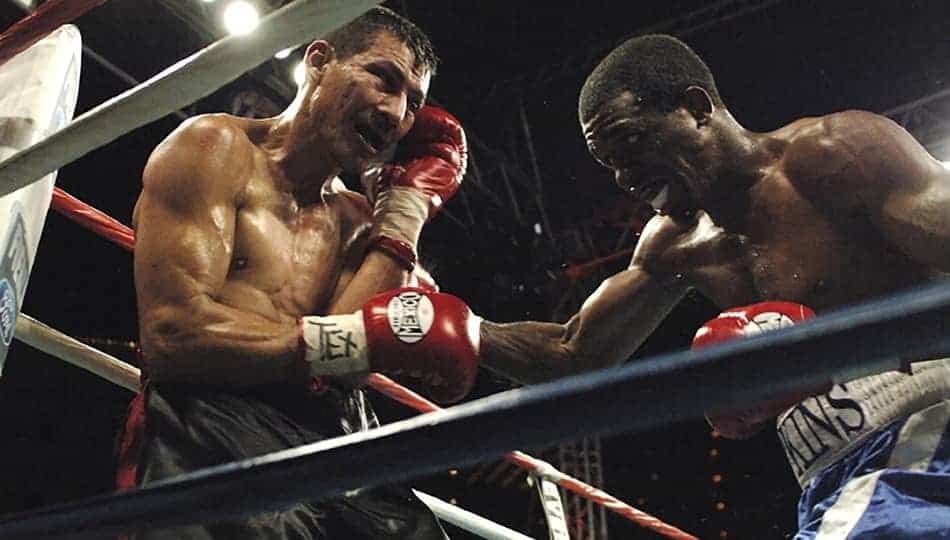
Blocking is the easiest way to defend punches. You simply need to meet them with your glove, forearm or elbow. Block punches at a mid or short distance, where you don’t have enough time to slip them or to bob and weave.
How to do it:
- Keep your hands on your forehead.
- Your palms should be facing each other
- Your index fingers should be on your forehead about half an inch above your eyes.
Don’t make fists so you can still see your opponent through the space between your gloves. Get in a little bit wider stance than usual because even if you block the shots they can still get you off balance. Keep your chin down, and keep your eyes on the opponent.
To block hooks bring your glove on the side of your head. Keep the elbows tight to block uppercuts.
To block body shots, meet the punch with your elbow and never with your hands. Your hands should be always up, protecting your head.
Parrying
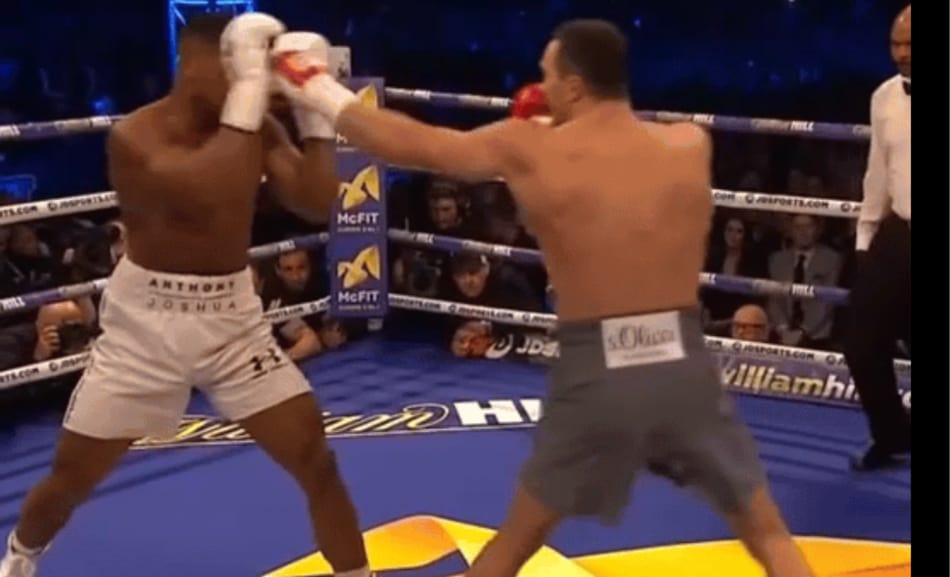
To parry a punch, you just need to knock it away with your glove. It’s an effective way to defend straight punches and it creates openings for counters.
Use parrying at a mid or long range to deflect jabs or straights. For instance, you can deflect your opponent’s jab, by quickly pushing his glove down. That will create an opening for a jab to the head or quick cross.
To parry a punch you need good timing and the best way to train it is in controlled sparring.
Rolling with punches
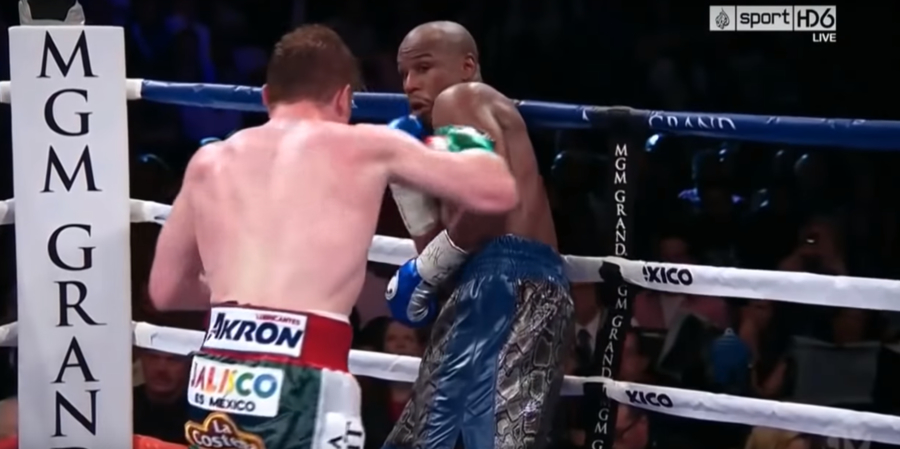
Moving with the punch, to decrease its impact is called rolling. For example, when your opponent throws a right hook, you can roll with the punch by moving your head to your right.
Do this when you’re on the ropes and can’t move back or when your opponent is too close to you and you can’t block, or move your head off the way of the shot.
If you want to see high-level rolling with punches, I recommend watching Floyd Mayweather fights when he is pressed against the ropes.
Related articles to boxing defense:
- 22 Tips on How to Take a Punch in Boxing Like a Pro
- 16 Ways to Recover From a Hard Punch Fast
- How to Recover From a Liver Punch
- How to Block a Jab? Beginners Guide
7) Boxing style
In my opinion, the fastest way to discover your boxing style is by watching your favorite fighters for inspiration. Most people tell you to not trying to copy their techniques when you’re a beginner but I think that’s not good advice.
I noticed that most people like the fighters with a similar body structure to theirs. For example, I am a tall person, and I like the fighting style of boxers such as Muhammad Ali, Lennox Luis, Deontay Wilder, and even Wladimir Klitschko. These boxers like to keep their opponents at a distance, often throw jabs and long-range hooks and uppercuts. And some of the techniques they use may work for me as well because our bodies are structured similarly.
But if you’re a short person, you may prefer the style of boxers such as Tyson or Joe Frazier, who always moved forward pressing their opponents. Of course, I don’t recommend using the flashy techniques which your favorite boxer is using before you learn the fundamentals but to get some inspiration from them won’t hurt you.
If you don’t have a favorite boxer yet, you can check out my article about the greatest heavyweight boxers of all time. I broke down their style and their favorite techniques which you may want to try in your next sparring session.
More related articles to boxing style:
- Swarmer Style – The Best Boxing Style for Short People
- 11 Advantages of Being Short in Boxing
- Why is Reach Important in Boxing? Let’s see
- Why Are Heavyweight Boxers So Tall?
8) Sparring tips
Before they gain some experience, most people don’t know how to act during sparring. So here are my top tips on boxing sparring:
- Sparring isn’t fighting, think of it as a game, not a competition. Go slowly at first, without much power in your punches.
- Try sparring only with jabs. That will help you to feel the distance better.
- Try sparring with roughly 80% speed before your full speed free sparring.
- Keep your eyes on the opponent all the time.
- Try defensive sparring – you’re not allowed to punch only your partner can. You just need to move and defend punches. The next round switch roles.
- Focus on volume, not on power. Try to land as many punches as you can, but don’t try to hurt your sparring partner. Use roughly 60-70% of your power when punching.
- Defend shots intelligently. Even though your opponent may not hit you with full power, imagine that every shot can knock you out.
- Don’t spar with over-aggressive opponents. Wait until you gain some experience and skill and you know how to deal with them.
9) Fighting tips
Here are my some tips on fighting in a boxing match:
- Start with a lot of feints and jabs to see the reactions of your opponent.
- Don’t forget to go to the body (especially to the liver – throw a lot of left uppercuts to the body).
- If you get hurt, get in a clinch. To do it just hug your opponent, so he can’t hit you. Or get him into a headlock with your lead hand and push his head down. Then just wait for the ref to separate you. Keep your head on the power hand shoulder of your opponent. That way he won’t be able to land something significant.
- Circle away from the power hand. If your opponent is a southpaw, circle to your left. That way you will avoid his power hand.
- Use your footwork only when it’s needed. Don’t just bounce around because you will get tired quickly.
- If you get really tired, get into a clinch and just lean on your opponent. Or start circling around your opponent and just protect yourself.
- If you get knocked down, wait until the 6-7th second, before you get up. Take your time.
- Bite your mouthguard hard when getting punched. That way you will flex your jaw and neck muscles, which will deaden the impact of the punch.
10) How to deal with different styles
There are many different types of boxers. Here are my tips on how to deal with most of them.
Brawlers

Those are offense-oriented boxers who like the exchanges. Brawlers usually have big punching power and a good chin but their technique and footwork are poor.
When fighting with a brawler, try to out-point them. Circle around them and jab their face. Use your footwork and avoid the exchanges. Don’t play their game.
Another strategy is to often go to the body. That will make them gas out more quickly in the later rounds.
Out-boxers
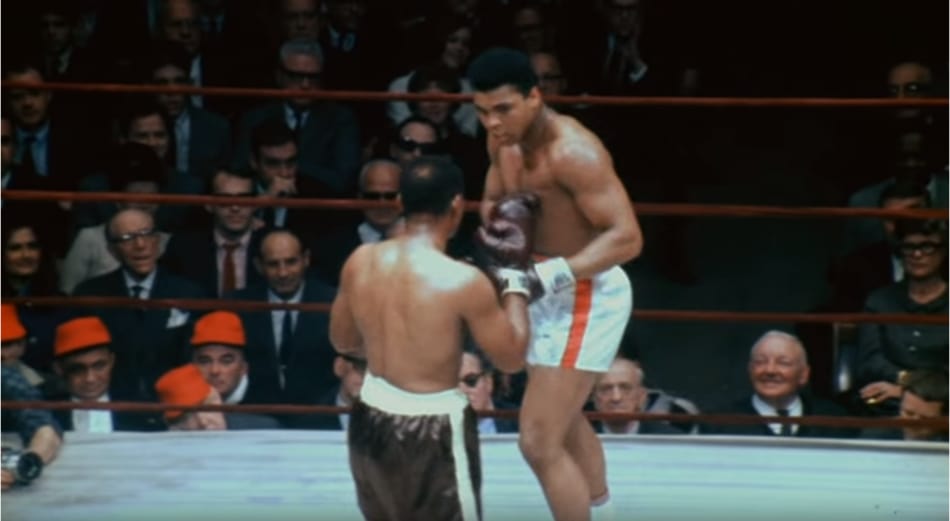
The out-boxers are very technical, and fast. They like to maintain a gap between them and their opponents and to use their jab a lot. They are usually tall boxers, who often rely on their reach and speed advantage over their opponents. Examples for such boxers are Muhammad Ali and Sugar Ray Leonard.
To beat an out-boxer you need to be aggressive and to pressure him. Chances are you won’t be able to out-point such a boxer, so try to get him on the ropes where you can destroy him with body-head combinations. Try to time their jabs, slip them and counter them with an overhand or a body shot.
Swarmers

Swarmers or infighters are boxers who like to fight at a short distance. They are usually short boxers for their weight class who always try to get in the face of their opponents. That way they negate the reach advantage of the opponent. Some of the most famous swarmers are Mike Tyson, Ricky Marchiano, and Joe Frazier.
Such boxers usually have big punching power and like to throw punches to the body. To beat a swarmer, you need to keep him at a distance, by circling around him and using your jab. Throw no more than 2-3 punches combinations and then move away. If the swarmer manages to close the distance, get into a clinch or push his head down and wait for the ref to separate you. You don’t want to fight from the inside with a swarmer.
Faster boxers
Walk them down and press them against the ropes. Or wait for them to attack you and counter them.
Taller boxers
Try to close the distance with a double jab or even triple jab. Throw a lot of overhands to counter their straight punches. Throw body shots as you close the distance.
Counter punchers
When fighting against counter punches, don’t commit first. Throw low-risk punches, for instance – quick jabs. Wait for them to become more aggressive or to try to counter you so you can catch them. Use a lot of feints to make them react.
Aggressive opponents
Wait for them to attack so you and counter. Try to catch them with a hard cross or any power hand punch, as they’re trying to close the distance.
11) Training tips
*There are two things you need to focus on when training for boxing – technique, and conditioning.
Technique
You can improve your technique by doing exercises such as shadowboxing, heavy bag work, mitt work, speed bag work or sparring. If you are a beginner, focus on shadowboxing and developing a proper technique. Then you can start working on the heavy bag or implementing the technique you learn in sparring.
Shadowboxing
Start shadowboxing by just throwing single punches – throw 50 jabs, 50 straights, 50 hooks, and uppercuts. As your techniques become good enough, you can start throwing combinations. Start with the basic combos. After that, start moving around and imagining you’re fighting while shadowboxing.
Here’s an article on everything you need to know about shadowboxing:
Conditioning
There are two aspects of the conditioning for boxing – endurance and explosive power. Your endurance is really important because you need to survive (and win) 6, rounds, 3 minutes each if you’re an amateur boxer, and up to 12 rounds if you’re a pro. To improve your endurance, you can try running, swimming, or rope jumping.
Your explosive power is the other important aspect of your conditioning. It will increase your punching power and speed. The best exercises for improving the explosive power are intervals of sprints, plyo push-ups or pull-ups or dips. You can also do supper sets. For example superset of 10 pull ups, 10 clapping push-ups and then 10 dips.
Tips:
- To increase your explosive power, focus more on the sprints than on the low-pace long distance runs.
- You need 1-3 days conditioning days per week
- For more information about training for boxing, check out my complete guide on the subject – The Best Boxing Workout for Beginners (More than 50 Drills)
More articles related to training:
- Does Strength Matter In Boxing?
- Can I Train Boxing Every Day?
- When Should I Start Sparring in Boxing?
12) Boxing gear
Here’s everything you need to start boxing, no matter if you’re going to train in a gym or at home:
Gloves
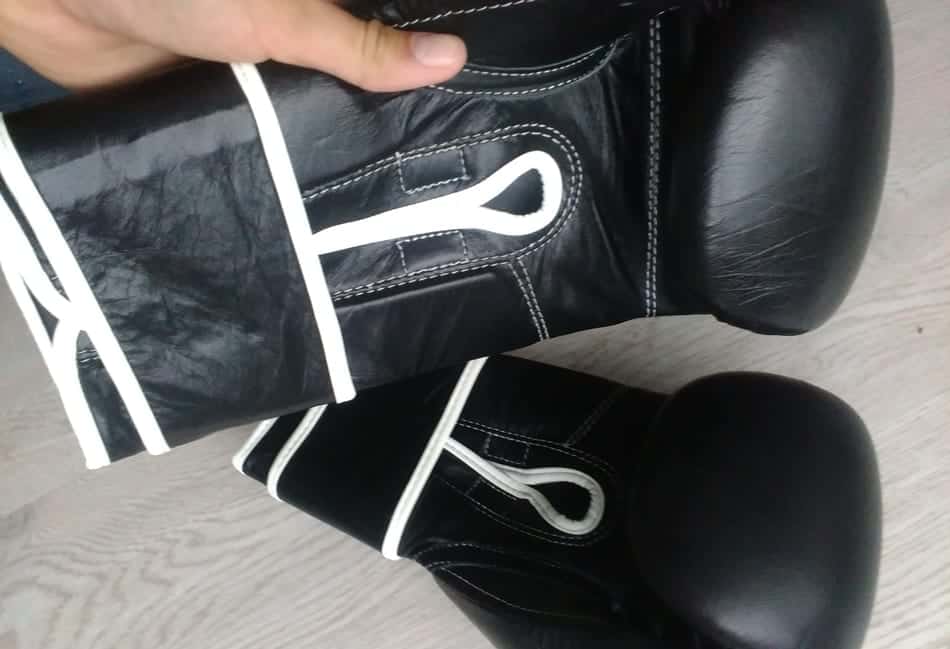
Your boxing gloves should be right-sized, comfortable, but also protective and durable. The price is also a huge factor. I believe that you don’t need to spend a fortune to get good boxing gloves. Actually, the boxing gloves that I use are really good but also cheap.
Check out which gloves I use, why I use them and what you need to look for when choosing boxing gloves:
Gym gear (Mouthguard, wraps, and headgear)

A pair of good boxing wraps will protect your knuckles and support your wrist when punching. And if you want to spar, a durable mouthguard is a must. You don’t necessarily need a headgear but it can protect you from cuts (if you don’t want to look like a boxer in your daily life).
If you want to know which are the best wraps, mouthguard, and headgear, considering the quality/price ratio, check out this article:
Home equipment
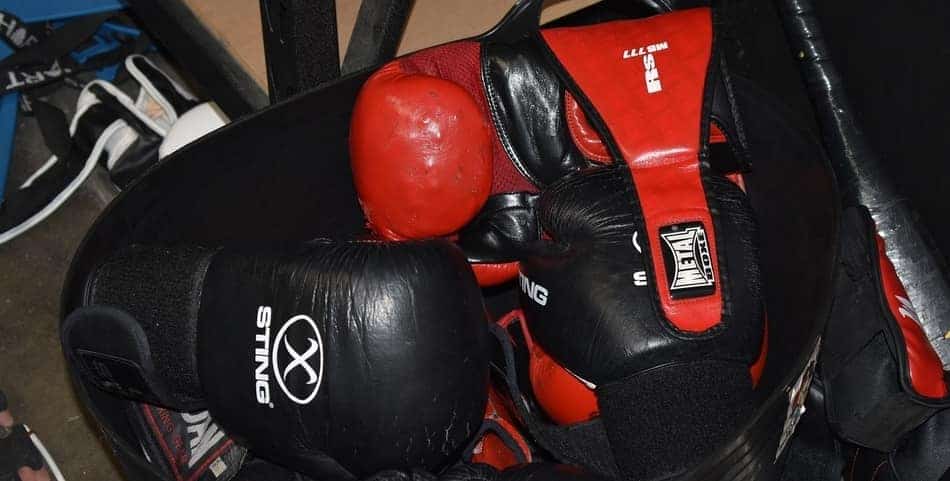
If you want to learn boxing but you aren’t able to join a gym, you need some equipment. If you aren’t going to do sparring, you don’t need mouthguard or headgear. But you definitely need punching bags and some other stuff.
Heavy bag – helps you improve your technique and power
Speed bag – helps you improve your timing and punching accuracy. You can also use it to train your head movement. It’s not the end of the world if you don’t have one but it’s beneficial.
Jump rope and weights – Jumping rope it’s a great endurance exercise which you can use as warm up or warm down. It also improves your footwork, balance and hands-legs coordination.
It’s also good if you have some light weights which you can use when shadowboxing. Weighted shadowboxing, helps you improve your technique and teaches you to keep your hands up.
Here’s more information on everything you need to train boxing at home:
13) Tips on choosing a boxing gym
If you never trained in a boxing gym before, it can be really hard to recognize the good gyms. There are two types of boxing gyms:
Fitness gyms
If you’re serious about boxing and don’t do it just for losing weight, don’t go to those gyms. These are usually expensive gyms, without much boxing equipment (sometimes even without a ring). Such gyms usually have one or two trainers and the workouts are very cardio oriented.
You aren’t going to learn advanced boxing technique there but the fitness gyms are definitely a good place to get into a shape. So if that’s your goal, go for it.
Professional gyms
Those gyms have amateur and/or professional boxing team. They have legit boxing coaches (usually more than one) so you’re going to really develop yourself there. The pro gyms are really big, with a lot of heavy bags, sometimes with more than one ring and with a lot of free to use gloves, jumping ropes, weights ect. That’s the gyms you are looking for if you’re serious about boxing.
If you want more tips on how to choose your boxing gym, check out this article:
14) Avoid these mistakes when starting boxing
Here are the most common mistakes which people make when they start boxing. Make sure you’re aware of them, so you never make them:
- Flexing the muscles too much
- Dropping the hand after they throw a punch, instead of bringing it back
- Overextending when trying to reach their opponent with their punches
- Not using the jab to set up bigger punches
- Covering the eyes when trying to block punches
- Always trying to “win” the sparring and going too hard
- Never going to the body
- Overtraining
- Forget about conditioning
- Too much weightlifting (that makes you stiff and decreases your speed and power)
15) Boxing inspiration
If you’re still not sure if you want to start boxing, even though you read this guide, or if you just want some inspiration, you can check out these articles:



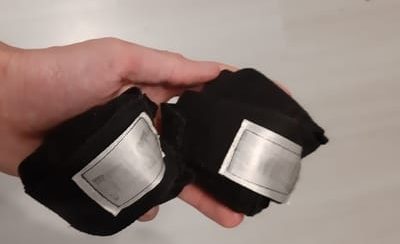
Can you tell me how to find amateur boxing cup in the Philippines during this pandemic..? I’m serious about boxing and i really want to become like canelo alvarez